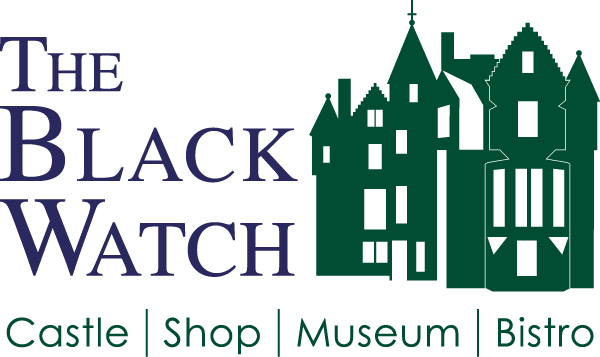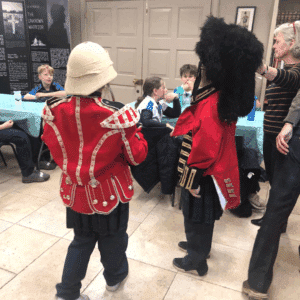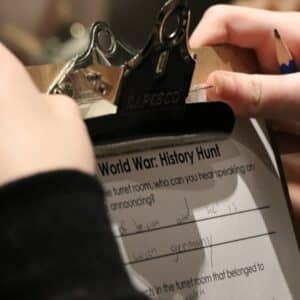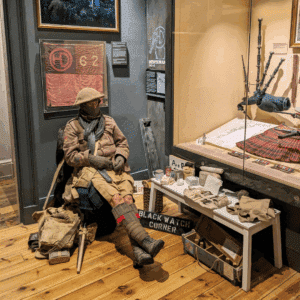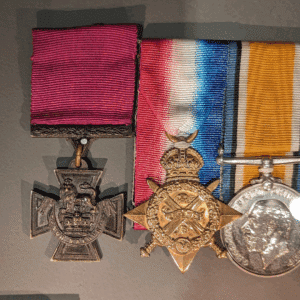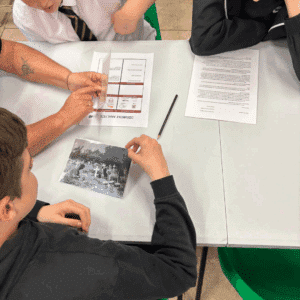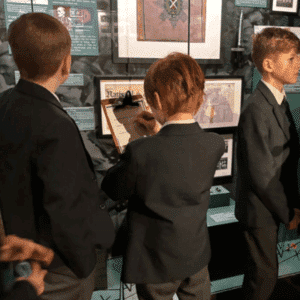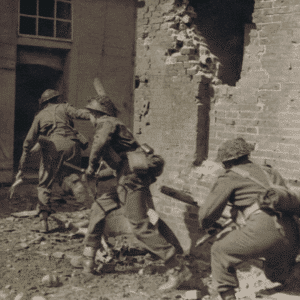Workshops
Workshops at The Black Watch Castle and Museum are hands-on, engaging and full of real stories from Scotland’s military past. Pupils don’t just learn about history, they step into it. Sessions are interactive, curriculum-linked and built around genuine artefacts, personal experiences and gallery-based learning. Whether it’s dressing in uniform, meeting a soldier character, or exploring original wartime objects, these workshops are designed to support what’s being taught in the classroom while offering something new.
All sessions are led by our Learning team and take place in our education room and museum galleries. Workshops are available for both primary and secondary schools. We tailor content to suit the age and needs of your group and are happy to discuss bespoke topics if there’s something specific you’re covering.
Use the links below to find what you need:
Primary School Workshops
Our primary school programme is designed to be creative, immersive and fun while still tying in closely with key learning objectives. We focus on building pupils’ confidence in historical enquiry and helping them make connections between the past and the world they live in today.
Each visit includes a warm welcome, up to four workshop sessions, and a chance to explore our museum galleries. Activities can be tailored for your class’s age group and abilities, and we’re always happy to adjust the format depending on your needs.
Sessions run for around 45 minutes and are designed to give your pupils a variety of experiences, including object handling, gallery-based challenges and character-led storytelling. We focus primarily on the First and Second World Wars, with a wide range of topics from uniforms to trench life, medals to primary sources.
Below you’ll find a list of our core workshops for Primary learners:
World War One
Students will engage with the 300-year history of The Black Watch by trying on various uniforms from the Regiment’s past. Together we will learn how to fold and put on the Fèileadh Mòr, button up our red coats, pull on our First World War kit, and pull up our Second World War trousers. The group will discuss the reasons for changes in the uniform due to the environment and location of members of The Black Watch as well as the influences from other cultures and societies.
Curriculum Links: SOC 1-02a / SOC 2-06a / SOC 3-06a
Students will team up for a scavenger hunt within the First World War gallery of The Black Watch Castle and Museum in order to find and identify objects used by members of The Black Watch during The Great War. We’ll gather as a group and discuss the experiences of men in the trenches, the impact of The Great War, and specific Scottish experiences in the First World War.
Curriculum Links: SOC 1-04a/ SOC 2-04a/ SOC 2-06a
Students will meet Private McNiven, a member of The Black Watch who served in The First World War. Pte. McNiven will give an interactive lecture and answer questions about his experiences, give a talk about food, clothing, and equipment that he used. From stinky cheeses to lice, students will experience life in the trenches of the First World War up close and discuss how the events of The First World War impact society today.
Curriculum Links: SOC 1-04a/ SOC 2-04a/ SOC 2-06a
After handling medals from the First and Second World Wars, students will look at examples of medals awarded for bravery and service and discuss citizenship before students are invited to design their own medals for people in their communities who make the world a better place. They will then be asked to design a medal of their own for acts of service and bravery within their own communities using markers, pencils, and paper.
Curriculum Links: SOC 2-16a/ SOC 2-16c
Using a combination of objects from the period of the First World War, students will work together to “meet” the object and determine who made it, what it was used for, and what information we can get from the object today. Students will be grouped into teams or allowed to work as individuals depending on the number in attendance but we’ll come together as a group to discuss the objects we’ve met, and how they relate to each other.
Curriculum Links: SOC 2-01a/ SOC 2-04a/ SOC 2-06a
World War Two
Students will engage with the 300-year history of The Black Watch by trying on various uniforms from the Regiment’s past. Together we will learn how to fold and put on the Fèileadh Mòr, button up our red coats, pull on our First World War kit, and pull up our Second World War trousers. The group will discuss the reasons for changes in the uniform due to the environment and location of members of The Black Watch as well as the influences from other cultures and societies.
Curriculum Links: SOC 1-02a / SOC 2-06a / SOC 3-06a
Students will team up for a scavenger hunt within the Second World War gallery of The Black Watch Castle and Museum to find and identify objects used by members of The Black Watch in the various theatres of the Second World War. We’ll discuss the impact of the Second World War at home, share stories of members of the Black Watch from Prisoner of War camps, and locate places of conflict on maps throughout the gallery.
Curriculum Links: SOC 1-04a/ SOC 2-04a/ SOC 2-06a
Students will engage with the story of William Bradford, a member of The Black Watch who was captured and escaped several times in the Second World War. A narrator will read out loud an account from William Bradford’s diary from the time of his escape and students will act out this story as a drama. This story ends on a cliffhanger and, using what they know about life in the Second World War, students must try and predict what happens to William Bradford next.
Curriculum Links- EXA 0-01a / EXA 1-01a / EXA 2-01a / EXA 0-12a/ EXA 1-12a/ EXA 0-13a / EXA 1-13a / EXA 2-13a/ EXA 1-14a / EXA 1-15a / EXA 2-15a
After handling medals from the First and Second World Wars, students will look at examples of medals awarded for bravery and service and discuss citizenship before students are invited to design their own medals for people in their communities who make the world a better place. They will then be asked to design a medal of their own for acts of service and bravery within their own communities using markers, pencils, and paper.
Curriculum Links: SOC 2-16a/ SOC 2-16c
Using a combination of objects from the period of the Second World War, students will work together to “meet” the object and determine who made it, what it was used for, and what information we can get from the object today. Students will be grouped into teams or allowed to work as individuals depending on the number in attendance, but we’ll come together as a group to discuss the objects we’ve met, and how they relate to each other.
Curriculum Links: SOC 1-06a/ SOC 2-01a/ SOC 2-04a/ SOC 2-06a
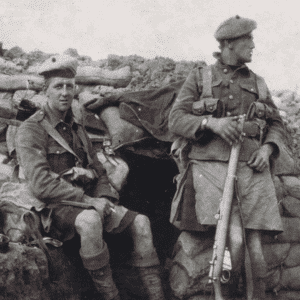 Students will meet and interview Private McNiven, a member of The Black Watch who fought in the European theatre in the Second World War. Pte. McNiven will give an interactive lecture and answer questions about his experiences. This workshop will go into detail about food, clothing, and equipment used in the Second World War, and will give students some insight into how the Second World War impacts us today.
Curriculum Links: SOC 2-04a/ SOC 2-06a/ SOC 3-06a
Students will meet and interview Private McNiven, a member of The Black Watch who fought in the European theatre in the Second World War. Pte. McNiven will give an interactive lecture and answer questions about his experiences. This workshop will go into detail about food, clothing, and equipment used in the Second World War, and will give students some insight into how the Second World War impacts us today.
Curriculum Links: SOC 2-04a/ SOC 2-06a/ SOC 3-06aSecondary School Workshops
Workshops for secondary pupils are designed to encourage deeper thinking, debate and discussion. Activities include source analysis, performance, and handling of historical artefacts. These sessions help learners develop a stronger understanding of the past while also improving literacy, critical thinking and collaboration.
Workshops are most suitable for pupils in S1 to S3 but can be adapted for senior pupils if required. Each session lasts around 45 minutes. Schools can select multiple workshops to build a visit that suits their timetable and curriculum focus.
Our current secondary workshops explore key themes from the First and Second World Wars.
World War One
Students will engage with the 300-year history of The Black Watch by trying on various uniforms from the Regiment’s past. Together we will learn how to fold and put on the Fèileadh Mòr, button up our red coats, pull on our First World War kit, and pull up our Second World War trousers. The group will discuss the reasons for changes in the uniform due to the environment and location of members of The Black Watch as well as the influences from other cultures and societies.
Curriculum Links: SOC 3-02a/ SOC 4-05a/ SOC 4-05c/
Students will be divided into teams for a scavenger hunt within the First World War gallery. This activity challenges students to identify objects used by members of The Black Watch in the First World War that fit into their group’s chosen category. We’ll come back together to discuss the objects they’ve found and how they relate to each other to tell the story of The Black Watch in the First World War.
Curriculum Links: SOC 3-05a/ SOC 4-05a/ SOC 4-10a
Using a combination of objects from the period of the First World War, students will work together to “meet” the object and determine who made it, what it was used for, and what information we can get from the object today. Students will be grouped into teams or allowed to work as individuals depending on the number in attendance, but we’ll come together as a group to discuss the objects we’ve met, and how they relate to each other.
Curriculum Links: SOC 3-05a/ SOC 3-06a/ SOC 4-05a/ SOC 4-10a
Students will be divided into teams and given stances to prepare to defend in a debate. Several topics are available for this activity and this can be adapted for topics that your class has been discussing relative to the First World War. Please get in touch with the Learning and Audiences Officer at Learning@theblackwatch.co.uk for further discussion.
Curriculum Links: SOC 3-01a/ SOC 3-06a/ SOC 4-01a/
Students will meet Private McNiven, a member of The Black Watch who served in The First World War. Pte. McNiven will give an interactive lecture and answer questions about his experiences, give a talk about food, clothing, and equipment that he used. From stinky cheeses to lice, students will experience life in the trenches of the First World War up close and discuss how the events of The First World War impact society today.
Curriculum Links: SOC 3-05a/ SOC 4-05a
World War Two
Students will engage with the 300-year history of The Black Watch by trying on various uniforms from the Regiment’s past. Together we will learn how to fold and put on the Fèileadh Mòr, button up our red coats, pull on our First World War kit, and pull up our Second World War trousers. The group will discuss the reasons for changes in the uniform due to the environment and location of members of The Black Watch as well as the influences from other cultures and societies.
Curriculum Links: SOC 3-02a/ SOC 4-05a/ SOC 4-05c/
Students will be divided into teams for a scavenger hunt within the First World War gallery. This activity challenges students to identify objects used by members of The Black Watch in the First World War that fit into their group’s chosen category. We’ll come back together to discuss the objects they’ve found and how they relate to each other to tell the story of The Black Watch in the Second World War.
Curriculum links: SOC 3-05a/ SOC 4-05a/ SOC 4-06b
Using a combination of objects from the period of the Second World War, students will work together to “meet” the object and determine who made it, what it was used for, and what information we can get from the object today. Students will be grouped into teams or allowed to work as individuals depending on the number in attendance, but we’ll come together as a group to discuss the objects we’ve met, and how they relate to each other.
Curriculum Links: SOC 3-05a/ SOC 3-06a/ SOC 4-05a/ SOC 4-06b
Students will be divided into teams and given stances to prepare to defend in a debate. Several topics are available for this activity and this can be adapted for topics that your class has been discussing. Please get in touch with the Learning and Audiences Officer at Learning@theblackwatch.co.uk for further discussion.
Curriculum Links: SOC 3-01a/ SOC 3-05a/ SOC 3-06a/ SOC 4-01a/
 Students will meet and interview Private McNiven, a member of The Black Watch who fought in the European theatre in the Second World War. Pte. McNiven will give an interactive lecture and answer questions about his experiences. This workshop will go into detail about food, clothing, and equipment used in the Second World War, and will give students some insight into how the Second World War impacts us today.
Curriculum Links: SOC 3-05a/ SOC 4-05a
Students will meet and interview Private McNiven, a member of The Black Watch who fought in the European theatre in the Second World War. Pte. McNiven will give an interactive lecture and answer questions about his experiences. This workshop will go into detail about food, clothing, and equipment used in the Second World War, and will give students some insight into how the Second World War impacts us today.
Curriculum Links: SOC 3-05a/ SOC 4-05aBursary & Funding
We want to make sure as many pupils as possible can enjoy a visit to The Black Watch Castle and Museum so we have a bursary which can offer up to £100 per school to help with any additional costs and is open to all who feel their class would benefit from some extra support.
It’s a simple process to apply, and we’re happy to answer any questions along the way. You can find out more and download the application form on our Bursary and Funding page, or get in touch with our Learning and Audiences Officer at learning@theblackwatch.co.uk
What Teachers and Students Are Saying
We’re proud to offer workshops that are informative, engaging and tailored to different learning needs. Here’s what recent visitors have shared about their experience with our education team and the impact it had on their pupils.
FAQ's
We can accommodate school groups of up to 30 pupils per visit. If your group is larger than this, please get in touch before booking. We’ll do our best to accommodate larger groups by splitting them into smaller sessions across the day. For the best learning experience, groups of 16 or more will be divided into smaller working groups. We require one responsible adult for every 10 pupils.
While our team will lead your workshops and engage your pupils with interactive learning, responsibility for supervision and behaviour lies with school staff at all times.
A full learning visit usually includes up to four 45-minute workshops or activities and lasts approximately three to four hours. This allows time for introductions, transitions, a lunch break and wrap-up at the end of your visit. If you’re looking for a shorter or more focused visit, we’re happy to tailor the schedule to suit your needs and class timetable.
Workshops cost £5 per pupil (ages 5 to 16). Accompanying adults are free of charge. There is no VAT added. All visits include:
- Four learning sessions (e.g. workshops, gallery hunts, interactive activities)
- Use of the designated lunch and coat space
- A 2-for-1 voucher for pupils to return with their families
- Time to browse the Museum galleries and shop, if desired
The Museum aims to be accessible to all visitors. Our learning spaces are on the ground floor, and the galleries on the first floor can be accessed via a lift. If a pupil in your group has additional support needs, please let us know when booking and we’ll do all we can to accommodate them. You can also preview our accessibility information on our Visitor Information page.
Pupils can eat packed lunches in our dedicated education room. If the weather allows, there is also space outside in the Castle grounds or nearby park.
Yes. Toilets are located near the Castle Gift Shop on the ground floor. To manage group movement and safety, we ask that no more than three pupils go to the toilets at a time, always accompanied or monitored by an adult from your group. Please share this guideline with your pupils before arrival.
Yes, the Castle Gift Shop stocks a small range of child-friendly items, books, and souvenirs. If you would like to include time for pupils to browse and shop, please let us know at the time of booking so we can factor it into your schedule.
Yes, we have a coach parking space available on site. Please indicate on your booking form if you are arriving by coach or minibus so we can reserve space for you.
Please report to the front desk on arrival. A member of the Learning Team will greet your group and guide you to the designated learning space. Coats and bags can be stored in the education room however, we recommend pupils bring only what they need, as we cannot take responsibility for lost or damaged belongings.
Yes. We regularly work with schools to tailor sessions around specific curricular goals or local history themes. Whether you’re working on a cross-curricular topic or focusing on a particular aspect of military or Scottish history, we’re happy to adapt materials or suggest the best-fit activities for your class.
To Book Your Visit
To book your visit, complete the School Enquiry Form below or download the booking form here and send it via email.
Email: learning@theblackwatch.co.uk
Phone: 01738 638152
Address: Balhousie Castle, Hay Street, Perth, PH1 5HR
